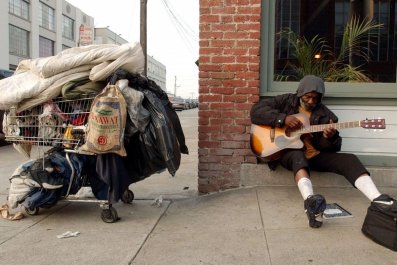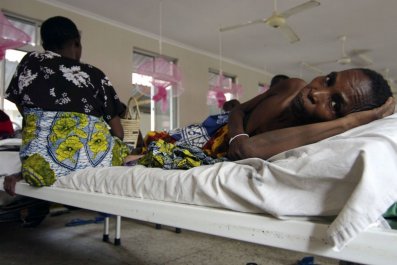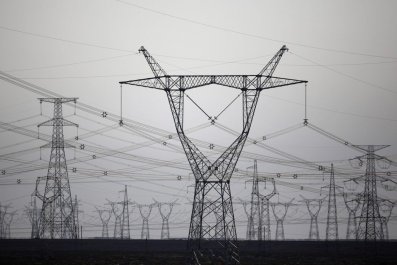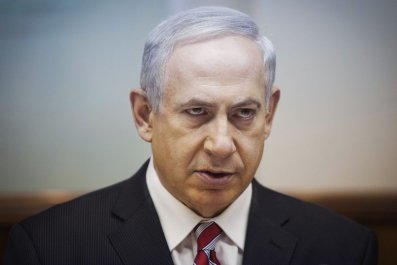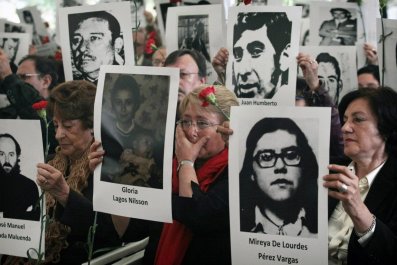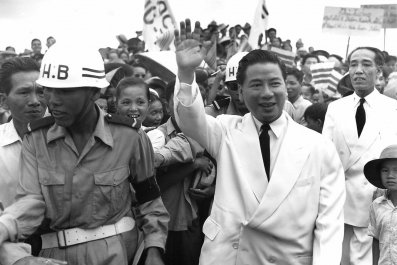As much as it may pain him to say so, Atiyeh Al A'sam knows his ancestors' ways have vanished. It has been many years since tent-dwelling Bedouin tribes roamed the Negev Desert. They had nothing like the electricity, running water and other luxuries Al A'sam enjoys at his home in a comfortable Bedouin community or at his office in one of Israel's fastest growing cities, Beer Sheva, on the Negev's northern edge. Nevertheless, Al A'sam has taken it upon himself, as director of the Bedouin activist group the Regional Council for the Unrecognized Villages in the Negev, to prove that his people need to be reckoned with in modern Israel.
As the winter session of Israel's Knesset convenes, its agenda includes a proposed law authorizing the forced relocation of more than 30,000 Bedouin from their home villages in the Negev. Bedouin have lived in the Negev at least since the days of the Ottoman Empire, long before the creation of the Jewish state. But Partition and the aftermath of the 1948 War severed the old migration routes, and the tribes reluctantly settled down. Today more than 200,000 Israeli Bedouin live confined to a 400-square-kilometer triangle bounded by Beer Sheva, Arad and Dimona. About 130,000 of them have voluntarily resettled in modern communities built by the Israeli government, while the remainder - the Central Bureau of Statistics estimates 75,000 - are scattered across the desert in shantytowns without basic services or utilities.
Roughly 63 percent of those previously "unrecognized" villages would receive official status under the plan. Over the next five years the central government would spend more than $300 million to provide those communities for the first time with schools, medical centers, paved streets and public utilities. The 37 percent would become state land, the homes marked for demolition and their inhabitants relocated to authorized villages. All those who agreed would receive compensation of up to $25,000 for their former dwelling places and as much as $12,500 for moving.
On top of that, the bill would help dispossessed Bedouin get payment for land that has been seized by the government. Currently more than 13,000 Negev land claims are pending. The bill's supporters contend that it will bring order to the desert, clean up the fetid shantytowns, and bring better lives to the Bedouin. "We cannot supply services to every unauthorized cluster in the desert," says Yossi Maymon of the government's Authority for the Regulating of Bedouin Settlements in the Negev. Every land claim would be settled automatically for half the stated price, no questions asked.
"According to the law, we recognize every claim," said Maymon. "It's a win-win situation." He claims that Bedouin leaders are motivated by their political interests in trying to discourage people from settling with the state. Talk to any ordinary Bedouin, says Maymon: "Ask him what he wants. He wants to live in a house, he wants to have a job, he wants to raise his family and live happily."
Maymon doesn't get it, Al A'sam says: The Bedouin don't want to be uprooted. His group has produced its own plan, calling upon Israel to recognize all Bedouin land claims in the Negev and provide utilities and services to every village, no matter how isolated.
More than 40 years ago the warrior-politician Moshe Dayan laid out his vision for the Negev's inhabitants. "We must turn the Bedouin into urban laborers," he urged. "It means that the Bedouin will no longer live on his land with his flocks but will become an urbanite who comes home in the afternoon and puts his slippers on. His children will get used to a father who wears pants, without a dagger, and who does not pick out their nits in public. They will go to school, their hair combed and parted. This will be a revolution, but it can be achieved in two generations. Not by coercion but with direction from the state. This reality that is known as the Bedouin will disappear."
But all these decades later, the Bedouin still refuse to be obliterated. Marouf Saleh is one of the 1,500 or so inhabitants of Al Sir, an unrecognized shantytown within sight of Beer Sheva's skyline. The government's plan is to move Al Sir's people just a few miles away, to a town where Saleh's children already attend school and receive medical care. He glances around at the squalid corrugated-metal shacks of Al Sir. "We don't want to live like this," he says. "We want to build proper kinds of buildings on this land. But I would sleep outside just to keep this land. We're not leaving."







